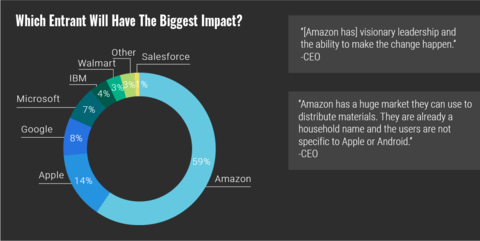https://www.healthcaredive.com/news/scale-blessing-or-burden-for-statewide-acos/551206/

Scale can smooth out quality variation and assuage providers’ fears of taking on risk. But it’s not a catch-all solution.
A handful of accountable care organizations are moving to cover an entire state, but not everyone thinks bigger is better when it comes to population health management.
Caravan Health, a company that works with ACOs, last week announced the launch of its second statewide program, this time in Florida. In the model, any of the 200-some Florida Hospital Association facilities that want to participate can join together to provide coordinated care.
The bid is meant to bolster care quality for Medicare beneficiaries while lowering costs and risk for participating facilities. But some experts say the larger scale, like rampant consolidation, could be more like an anchor weighing down an ACO instead of a beam propping it up.
“At the end of the day, success or failure is based on success in managing the quality of care,” Michael Abrams, partner at Numerof & Associates told Healthcare Dive. “While there may be some bigger numbers involved, I think the safety angle that they’re selling may not be all it’s cracked up to be.”
Caravan has no plans to back down on the model, however, and plans to roll out two more statewide ACOs in the next couple of weeks.
ACOs existed before the Affordable Care Act, but in 2011 HHS released new rules under the landmark law aimed at helping providers coordinate care through the population health management programs. Since then, the number of ACOs have grown dramatically, from an estimated 32 to more than 1,000 in 2018, according to Leavitt Partners.
A statewide all-payer ACO in Vermont has seen some success, but Caravan’s model and its efforts are some of the first to leverage the programs over a much larger population.
The business model
The Florida ACO, created in partnership with the FHA, is the second from Kansas City-based Caravan. The first, in Mississippi, was launched in January. Under the program, hospitals have access to Caravan’s population health management model to build primary care capacity and monitor quality results.
Mississippi currently has 29 providers participating in the program, managing care for roughly 130,000 Medicare patients in 22 locations. Its operations include hiring and training population health nurses throughout the state, annual wellness visits, chronic care management and more.
It’s potentially a good business playbook for both parties. The hospital association captures a revenue stream that’s not dependent on their membership — increasingly important in these days of sharp provider headwinds — and Caravan is granted access to the Medicare lives of a couple hundred hospitals in the state.
The need for population health management is especially acute in Mississippi, which ranks last or close to last in every leading health outcome, according to the state Department of Health. Florida and Mississippi couldn’t be farther apart when it comes to their primary care infrastructure, a factor linked to ACO success. According to the NCQA database, Florida has 894 patient-centered medical homes. Mississippi has 74.
“With population health, we improve the health of our state so it’s a win-win all the way around,” Paul Gardner, the director of rural health at the Mississippi Hospital Association told Healthcare Dive.
And Caravan, which currently works with more than 225 health systems and 14,000 providers, touts its track record with its programs. In 2017, its ACOs beat nationwide ACO performance with savings of $54 million and quality scores of 94%, a spokesperson said.
By comparison, studies have yielded mixed results when it comes to ACO success elsewhere.
An April report from Avalere found the Medicare Shared Savings Program, a CMS model to foster ACOs in Medicare, missed federal cost-savings projections from 2010 by a wide margin and raised federal spend by $384 million.
But a National Association of ACOs analysis retorted that MSSP ACOs saved $849 million in 2016 alone, and a whopping $2.66 billion since 2013 (higher than CMS’ $1.6 billion estimate). And an early 2017 JAMA Internal Medicine analysis found ACO savings only increase with time.
Scale: protection or illusion?
The threat of financial loss is a leading obstacle to participation in ACOs. Smaller ACOs are more likely to experience widely variable savings and losses simply due to change, Caravan representatives say, while larger ACOs deliver more predictable and sustainable results.
“The only way we can create certainty around our income is to have processes and accountability and the infrastructure, but you’ve also got to have to scale,” Caravan CEO Lynn Barr told Healthcare Dive. Barr said that since Caravan’s 2014 inception, the company has found having 100,000 Medicare lives or more in an ACO yields larger savings than the roughly 80-85% of ACOs with only 20,000 lives or fewer.
As the owner of the ACOs, Caravan assumes 75% of the financial risk for providers. Barr said that evens out to a maximum risk of $100 per patient.
By comparison, in the basic track of the Medicare Shared Savings Program, the maximum risk for providers is $400 per patient. In the enhanced model it’s $1,500. “With our model, if people follow it and have 100,000 lives, there’s no reason they would ever write a check,” Barr said.
That is one of the selling features of the statewide ACO: It can be a mitigating factor for hospitals that might feel too exposed on their own, Abrams said.
But the threat of risk could still prove too much. CMS finalized new rules for shared savings ACOs in December, shaving down the amount of time they had before they were forced to assume downside risk from six year to two years for new ACO participants or three years for new, low-revenue ACOs.
And some critics say it’s a safe bet that the losses incurred by any one organization are not going to be spread across the other parties in the ACO, especially given the shortened timeline. As the deadline for assuming more risk approaches, Caravan could see attrition among providers who don’t feel ready.
“I think this is very, very, very challenging,” nonprofit primary care advocacy Patient-Centered Primary Care Collaborative Director Ann Greiner told Healthcare Dive. “Most of the hospital leadership has not been working under these kinds of conditions.”
And ACOs are all about a connection to the community, which might prove difficult to foster across an entire state.
“You’ve got to leverage people at the community level and have those relationships with the patient and, in the ideal world, know where to refer,” Greiner said. “At the state level, that’s pretty far removed.”
Unified governance, heterogeneity pose problems
The scale of large ACOs makes them much more difficult to manage, experts say. ACOs have a single set of policies that, in an organization involving more parties, needs to be adopted in one form or another that’s acceptable to all participating providers.
That’s done by majority, Barr said. Each participating provider has a single vote and the overall vote binds the ACO board’s decision on waiver approval, discharge standards, shared savings distribution plans and more.
But in an ACO with a lot of differently cultured and structured providers — academic hospitals, teaching hospitals, acute care, research, small, medium, large etc. — it can get a lot more complicated, Abrams said. For example, if 100 FHA hospitals opt into the new Caravan Health model, that’s 100 variations in acute care policy, physician compensation and all else involved in managing cost and quality operations, and 100 different voices strongly advocating to keep doing things the way they’ve always done them.
“Some issues are just working through the details,” Gardner from the Mississippi Hospital Association said. “In some of your larger systems, that’s getting the medical staff all pulled together and singing off the same sheet of music.”
The more homogeneous the ACO organizations are, the easier it will be to get them to buy in to the various policies and procedures that need to be put in place for operations to flow smoothly. “You can’t outsource that,” Abrams said. “The most you can do is get guidance from someone who’s perhaps been around this block about how to handle it.”
Barr maintains Caravan standardizes the most important factors.
“Nurses are critical to this model,” Barr said. “That’s what everyone’s doing the same.” Caravan has found that after nurses are trained in population health management over three to six months, each dollar the company spends on that provider produces two dollars in savings.
And, after Caravan puts the population health management infrastructure in place, the providers themselves helm the ship with a steering committee, leveraging data to see what differentiates them from the next community and making slight adjustments to course-correct.
Challenges for hospitals
Hospitals will face two challenges: taking in the coordinated framework given to them by Caravan and translating it into behavioral change, Abrams said. The success of the overall ACO will depend on the latter as “those who can’t do that successfully will probably self-select out when it comes time to take on risk.”
The question is whether Caravan can really deliver on some of the promises it’s explicitly making.
“The truth is that hospitals who haven’t had the infrastructure to manage their cost and quality are not better off in terms of consolidation and a position in a larger ACO,” Abrams said. “So an ACO comprised of multiple small hospitals and independent hospitals can’t expect savings proportionate to their aggregate size.”
With more statewide ACOs on the way, it’s important Caravan (and partnering providers) work out any kinks in the model sooner rather than later.
“This is not like bringing in a plumber to fix your faucet,” Abrams said. “At the end of the day, an organization stands on its own.”
















